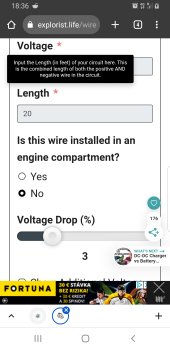Hello again,?
I ordered this product https://www.bluesea.com/products/7748/SafetyHub_150_Fuse_Block and I'm just trying to figure out what size cable should I use between this Safetyhub and my 24v battery. As you can see in the description, it says for maximum combined operating amperage 200A use 0/2 AWG, for 350A use 0/4 AWG. They don't differentiate between 12v and 24v systems and I think using 0/4 wire in this situation would be an overkill considering I plan to put a 300A MRBF fuse on the battery terminal which suits 0/2 cable perfecty. For the time being I don't want to put more than 200A through this safetyhub, but in a few months I might want go to about 230-250A maximum. Do you know if those stats from Blue Sea were meant for a 12v system? Would I be okay using 0/2 AWG?
Thanks
Jan
I ordered this product https://www.bluesea.com/products/7748/SafetyHub_150_Fuse_Block and I'm just trying to figure out what size cable should I use between this Safetyhub and my 24v battery. As you can see in the description, it says for maximum combined operating amperage 200A use 0/2 AWG, for 350A use 0/4 AWG. They don't differentiate between 12v and 24v systems and I think using 0/4 wire in this situation would be an overkill considering I plan to put a 300A MRBF fuse on the battery terminal which suits 0/2 cable perfecty. For the time being I don't want to put more than 200A through this safetyhub, but in a few months I might want go to about 230-250A maximum. Do you know if those stats from Blue Sea were meant for a 12v system? Would I be okay using 0/2 AWG?
Thanks
Jan



